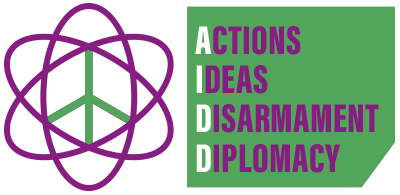Later this month, President Obama will visit Hiroshima.Â
By Setsuko Thurlow and Dr Ira Helmand via CNN
Seventy-one years after an atomic bomb leveled the city, it is no doubt progress that a sitting U.S. president, the commander of a nuclear arsenal that can destroy the world many times over, will finally see firsthand what these weapons can do.
But it is not enough that he pay only a ceremonial visit. The President needs to meet with survivors of the attack, known as Hibakusha (which translates literally to “explosion-affected people”), and listen to what they are telling him and the world: You must understand the full horror of what happened in Hiroshima and Nagasaki.
The Hibakusha make flesh and blood the real nature of nuclear war. For more than seven decades, Hibakusha of all ages and backgrounds have tried to convey nuclear weapons’ awful toll — not to elicit an apology for the past, but to build a secure present and future in which such weapons are never used again. Like survivors of the Nazi Holocaust, they have spoken out over and over again, making themselves relive the most painful experiences imaginable — trauma, ill health, loss and discrimination among many others — in the hope that others will not have to suffer their fate.
Theirs is a message that President Obama needs to hear. For too long, nuclear armed states have talked about these weapons as though they were playing some abstract game of chess.
And he needs to listen also to the scientific and medical communities, who are raising the alarm about what modern nuclear arsenals will do.
Recent studies have shown that the use of just 100 nuclear weapons, as might occur in a war between India and Pakistan, would cause worldwide climate disruption and a calamitous decline in global food production, causing famine across the planet that could put 2 billion people at risk. The weapons on a single U.S. Trident submarine can produce this same disaster. The United States has 14 of them, plus a fleet of land-based missiles and strategic bombers.
When he was running for office, President Obama brought us a vision of a world free of nuclear weapons. After taking a major step in that direction with successful negotiation of the New START Treaty, he has seemingly abandoned that goal.
Instead, he proposes the United States spend $1 trillion over the next 30 years replacing nearly every major nuclear weapons system with a newer version designed to last for decades. All eight of the other nuclear armed states are pursuing similar plans, stoking what has become a new global arms race.
In addition, his administration has been implacably hostile to the growing movement around the world to stigmatize nuclear weapons through a new treaty that bans possession of these most destructive of all implements of war.
That movement is the most important initiative for nuclear disarmament in a generation. Recognizing the utter failure of the nuclear weapons states to heed Article VI of the Nuclear Non-Proliferation Treaty by working to eliminate their nuclear arsenals, nonnuclear countries have come together in a series of conferences to examine what the Red Cross calls the humanitarian impact of nuclear weapons. After hearing medical and scientific evidence and moving testimony of Hibakusha and of victims of atmospheric nuclear testing at these meetings, 127 countries have indicated support for a Ban Treaty as the best way to put pressure on the nuclear armed states.
By an overwhelming majority, the United Nations voted last fall to establish an open-ended working group to “take forward multilateral nuclear disarmament negotiations.” Earlier this month, we both had the opportunity to address this working group to present testimony of those who survived Hiroshima and the latest evidence about the risk to humanity if these weapons are used again.
See full article here.
